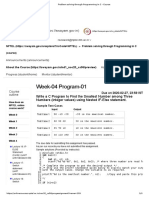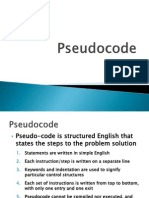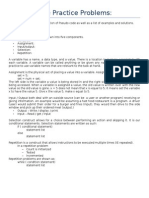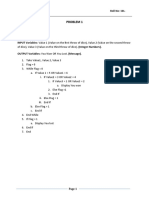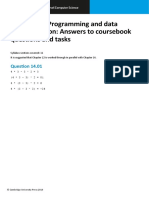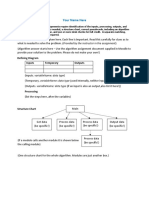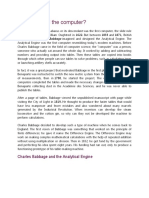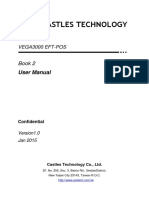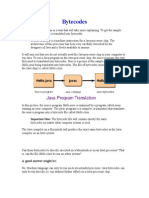0% found this document useful (0 votes)
177 views2 pagesDesk Check Example - Modules
This document describes a desk check of a program that finds the smallest of three numbers using a sub-algorithm called getSmallestNumber(). The sub-algorithm takes the three numbers as inputs, sets the smallest number to the first input, and then checks if the other two inputs are smaller, updating smallest if they are. It then returns smallest. The main algorithm calls getSmallestNumber(), assigns the return value to smallest, and displays it. The desk check walks through two examples to verify the program works correctly.
Uploaded by
Thành Bùi TiếnCopyright
© © All Rights Reserved
We take content rights seriously. If you suspect this is your content, claim it here.
Available Formats
Download as PDF, TXT or read online on Scribd
0% found this document useful (0 votes)
177 views2 pagesDesk Check Example - Modules
This document describes a desk check of a program that finds the smallest of three numbers using a sub-algorithm called getSmallestNumber(). The sub-algorithm takes the three numbers as inputs, sets the smallest number to the first input, and then checks if the other two inputs are smaller, updating smallest if they are. It then returns smallest. The main algorithm calls getSmallestNumber(), assigns the return value to smallest, and displays it. The desk check walks through two examples to verify the program works correctly.
Uploaded by
Thành Bùi TiếnCopyright
© © All Rights Reserved
We take content rights seriously. If you suspect this is your content, claim it here.
Available Formats
Download as PDF, TXT or read online on Scribd
/ 2




